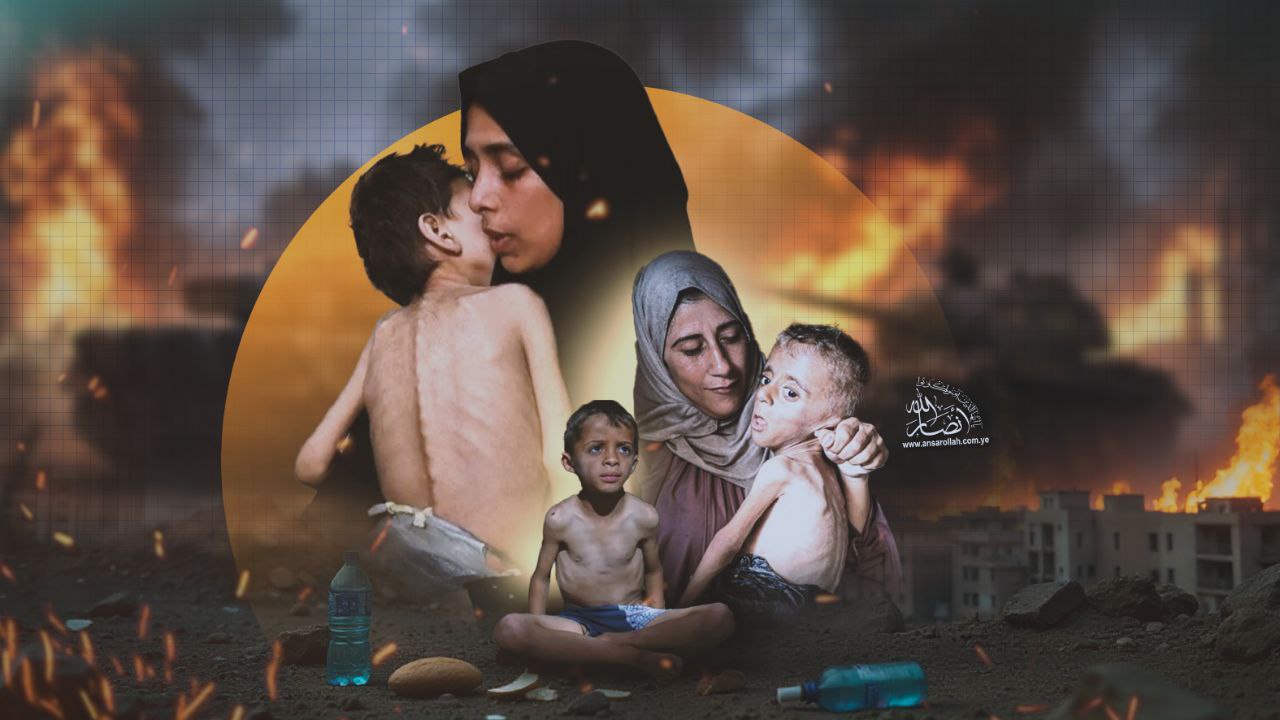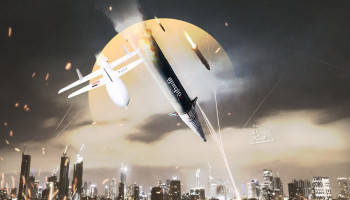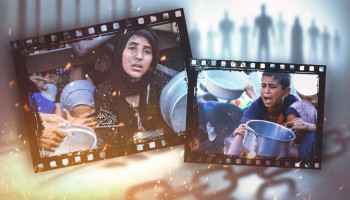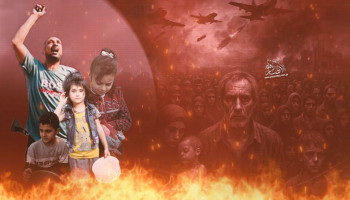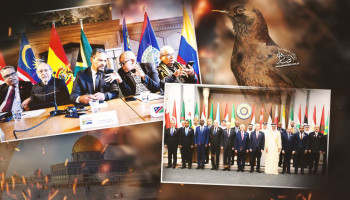Published: Safar 3, 1447 AH
As the humanitarian catastrophe in the Gaza Strip escalates and global calls intensify to rescue over two million besieged civilians, the Israeli occupation continues to evade genuine international pressure. Through transparent and increasingly discredited tactics, it attempts to obscure its policies of starvation, blockade, and slow extermination. The Zionist entity persistently delays the opening of crossings while issuing hollow statements about easing the siege, resorting instead to theatrical spectacles such as sporadic airdrops and the entry of a handful of aid trucks—insufficient even to feed a single devastated neighborhood.
In a bid to contain mounting international outrage, the occupying regime announced what it termed a “tactical truce” lasting ten hours daily, covering areas including Al-Mawasi, Deir al-Balah, and parts of Gaza City. Under this so-called ceasefire, the Jordanian Armed Forces, coordinating with the United Arab Emirates, carried out three airdrop missions to deliver humanitarian and food aid. However, Gaza residents and eyewitnesses confirmed that some of these aid packages landed in active combat zones, while others fell on tents housing displaced civilians, injuring several, including children. Humanitarian organizations have criticized airdrops as a costly and ineffective solution that further endangers civilian lives rather than protecting them.
On the ground, the number of trucks allowed entry remains shockingly low. To date, only 78 trucks have passed through the Kerem Shalom crossing: 36 for the World Food Programme, six carrying baby formula and diapers, and five for the World Central Kitchen. An additional 47 trucks entered through Zikim, including 20 loaded with flour and 11 for the World Central Kitchen, according to UN sources.
The Criminal Netanyahu has openly declared his intention to maintain only a minimum flow of aid, lashing out at the United Nations for accusing his government of obstructing humanitarian relief. He accused the organization of “lying and fabricating excuses,” reinforcing concerns about the entity’s manipulation of aid narratives.
Netanyahu’s assault on the UN followed the release of a report by the UN Office for the Coordination of Humanitarian Affairs (OCHA), which highlighted significant and dangerous obstacles confronting humanitarian efforts. These include direct threats to aid workers, unsafe or restricted roads, and the repeated delay or denial of aid convoys—factors that waste precious time and resources while obstructing urgent relief operations.
OCHA also called for allowing more essential private-sector goods into Gaza, stressing that humanitarian assistance alone cannot sustain a population of over two million. In a pointed statement, UNRWA’s Head of Communications asked: “Why are we using airdrops when we could be sending hundreds of trucks across the border?” She emphasized that land-based aid delivery is faster, easier, more cost-effective, and significantly safer. She warned that airdrops alone will not prevent the worsening famine, especially while thousands of aid trucks remain stalled, awaiting Israeli authorization to enter the Strip.
Despite the Zionist regime’s media spin and staged imagery, the numbers on the ground starkly contradict its claims. Since October 7, 2023, over 59,921 Palestinians have been killed—among them thousands of women and children—and more than 145,233 have been injured. From March 18, 2025, to the present, 8,755 additional Palestinians have been martyred, and more than 33,192 wounded.
Famine has become a deliberate tool of death: 147 people have died from malnutrition and food scarcity so far, including 88 children, amid the near-total collapse of Gaza’s healthcare infrastructure.
Field reports and humanitarian organizations unanimously agree that meeting Gaza’s basic survival needs requires the immediate delivery of at least 500,000 bags of flour and no fewer than 600 aid trucks daily, loaded with food, baby formula, medicine, and fuel essential to operate hospitals, water facilities, and sewage systems. Yet, the occupation continues to block the entry of cooking gas—which has been completely halted since March 2—and maintains severe restrictions on merchants, preventing the flow of vital goods into the enclave.
Saving Gaza does not require high-profile airdrop stunts or superficial deals—it demands genuine pressure that compels the occupation to open the crossings unconditionally, allow the entry of thousands of stalled aid trucks, ensure the supply of fuel and medical equipment, and halt the aggression immediately to enable rescue and civil defense teams to reach victims trapped beneath rubble and scattered in the streets.
Media spectacles will not save lives; they simply buy the occupation more time to prolong the siege and extinguish what little life remains in Gaza. What Gaza needs today is not flour bombs dropped from the sky, but open land corridors, unrestricted truck entry, and fuel to bring hospitals and water systems back to life. Every day of delay means more people dying from hunger and disease, after the world failed to protect them from bombs.
Rescuing Gaza’s women, children, the sick, and the starving is not a matter of charity—it is a moral and humanitarian imperative that cannot be compromised. The occupation must not be allowed to kill Gaza’s people twice: once through bombs, and again through starvation cloaked in the false label of “humanitarian aid.”

